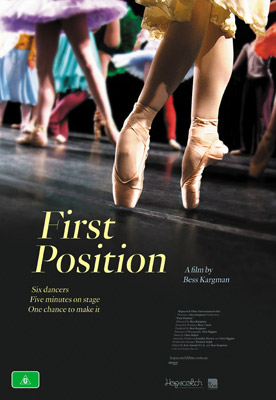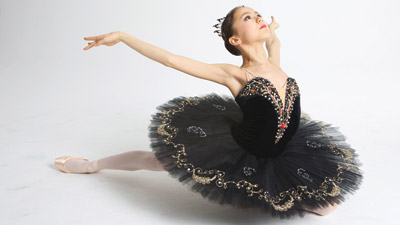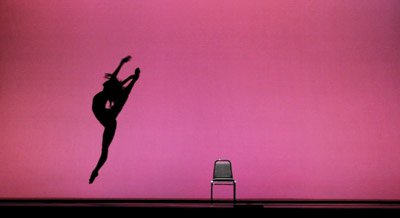Bess Kargman First Position Interview

First Position
Cast: Aran Bell, Rebecca Houseknecht, Joan Sebastian Zamora
Director: Bess Kargman
Genre: Documentary
Rated: G
Running Time: 94 minutes
Synopsis: First Position follows the inspirational footsteps of six young talented ballet dancers aged nine to sixteen as they struggle to maintain form in the face of injury and personal sacrifice on their way to one of the most prestigious ballet competitions in the world: the Youth America Grand Prix.
Lifelong dreams are at stake, with hundreds of dancers from around the globe travelling to New York each year, competing for a handful of elite scholarships and contracts. Practice and discipline are paramount, and nothing short of perfection is expected. Struggling through bruised feet and near exhaustion all while navigating the drama of adolescence and family life, First Position combines built-in drama, tension and suspense with exciting and beautifully shot performances. With the diversity of each dancer's backstory coupled with a showcase of awe-inspiring talent, tenacity and passion, First Position recalls documentaries such as Spellbound in painting a thrilling and moving portrait.
First Position
Release Date: April 11th, 2013
Directors Statement
My entire childhood I danced. I always had this huge love of ballet, despite my early 'retirement" at the age of 14. Fourteen years later, when I took a break from journalism and set out to direct my first feature film, I decided to make a movie that I always wished had existed. And then I got lucky: One day I was walking in lower Manhattan and saw a pack of ballet dancers waiting to get into the final round of the Youth America Grand Prix competition, held annually each spring. It was sold out so I snuck in and sat in the back. On stage walked an 11-year-old girl ('bitty baby ballerina," I called her), whose 2-minute performance had such artistry, grace, and strength that I stood up, walked out of the theater and said, 'This Is My Movie." What unfolded next was a thrilling (and sometimes exhausting) year of fundraising and shooting, and then nearly a year of editing. I knew I wanted to show how diverse the ballet world is in terms of socio-economic status, race, and geography. Additionally, I wanted to shatter stereotypes (not all skinny ballerinas are anorexic, not all male ballet dancers are gay, not all stage mothers are psycho, and so on). I also wanted to show that a competition that awards scholarships to elite ballet schools can pave the way to making it as a dancer, but that the steep climb to get there is daunting, as ballet training is extremely expensive and injuries often ruin careers. Most importantly, I wanted to show that the level of devotion (and amount of training) required to succeed as a dancer is no different from any other professional sport.
I'm thrilled to finally have that opportunity and grateful to the talented people (both behind and in front of the camera) who gave it their all to see First Position turn into the movie I always wished had existed.
-Bess Kargman

Interview with Bess Kargman
Question: What do you want audiences to learn from First Position?
Bess Kargman: I think there is a lot of misconception about the ballet world, so I made sure to select subjects that I knew would be able to challenge certain stereotypes. I wanted to show that not all ballet dancers are rich, not all are white, not all male ballet dancers are gay, not all female ballet dancers are anorexic, and not all stage moms are psycho…etc.
Also, few people realise the toll that ballet takes on the body (or that the pain threshold of professional dancers is close to superhuman). I knew that if I could thoroughly document the worlds these dancers inhabit, and the challenges they face on a daily basis, I would be able to craft an extremely unique documentary.
Question: What prompted the idea for your film and how did it evolve?
Bess Kargman: My entire childhood I danced. I always had this huge love of ballet (even after quitting to play ice hockey). There are two things that compelled me to direct and produce FIRST POSITION. I believed that my ballet background was enough of an asset to help me overcome some of the mistakes that I feared making as a first-time director. Secondly, growing up this was a film I wished had existed (or to put it more selfishly, I was tired of waiting for someone else to make the movie).
There were a slew of veteran filmmakers who (in an effort to provide well-intentioned advice) told me I was biting off more than I could chew. They reminded me how few documentaries are released theatrically each year, and how much work is required to distill hundreds of hours of footage into a 90-minute feature. These are things I never forgot along the way, but I forced myself to pretend otherwise. Maintaining such an outlook helped me stay focused (and optimistic) during the two years it took to shoot and edit the film.
Question: Elaborate a bit on your approach to making the film.
Bess Kargman: The two most important things that I learned as a student at Columbia Graduate School of Journalism are that a story is only as good as its characters, and that access is everything. These principles hold true no matter what format the story is told (whether it be print, radio or on film).  I knew I would have to convince the competition to grant me exclusive access, and so I put together a detailed proposal that outlined my desire to create an honest portrayal of what it means to have a dream at such a young age, and the sacrifice required to make it as a dancer. I also knew that for some youths (especially in this economic climate), winning a scholarship can mean the difference between making it as a dancer or relinquishing a dream.
I knew I would have to convince the competition to grant me exclusive access, and so I put together a detailed proposal that outlined my desire to create an honest portrayal of what it means to have a dream at such a young age, and the sacrifice required to make it as a dancer. I also knew that for some youths (especially in this economic climate), winning a scholarship can mean the difference between making it as a dancer or relinquishing a dream.
Lastly, I feared that if I solely relied on outcome (who wins) I would be risking the entire project on factors I had no control over. So I selected subjects whose personal stories were so compelling that even if everyone tanked, the audience would still leave the theater feeling moved and inspired by a group of extraordinary dancers who, at such a young age, have devoted their lives to ballet.
MORE





